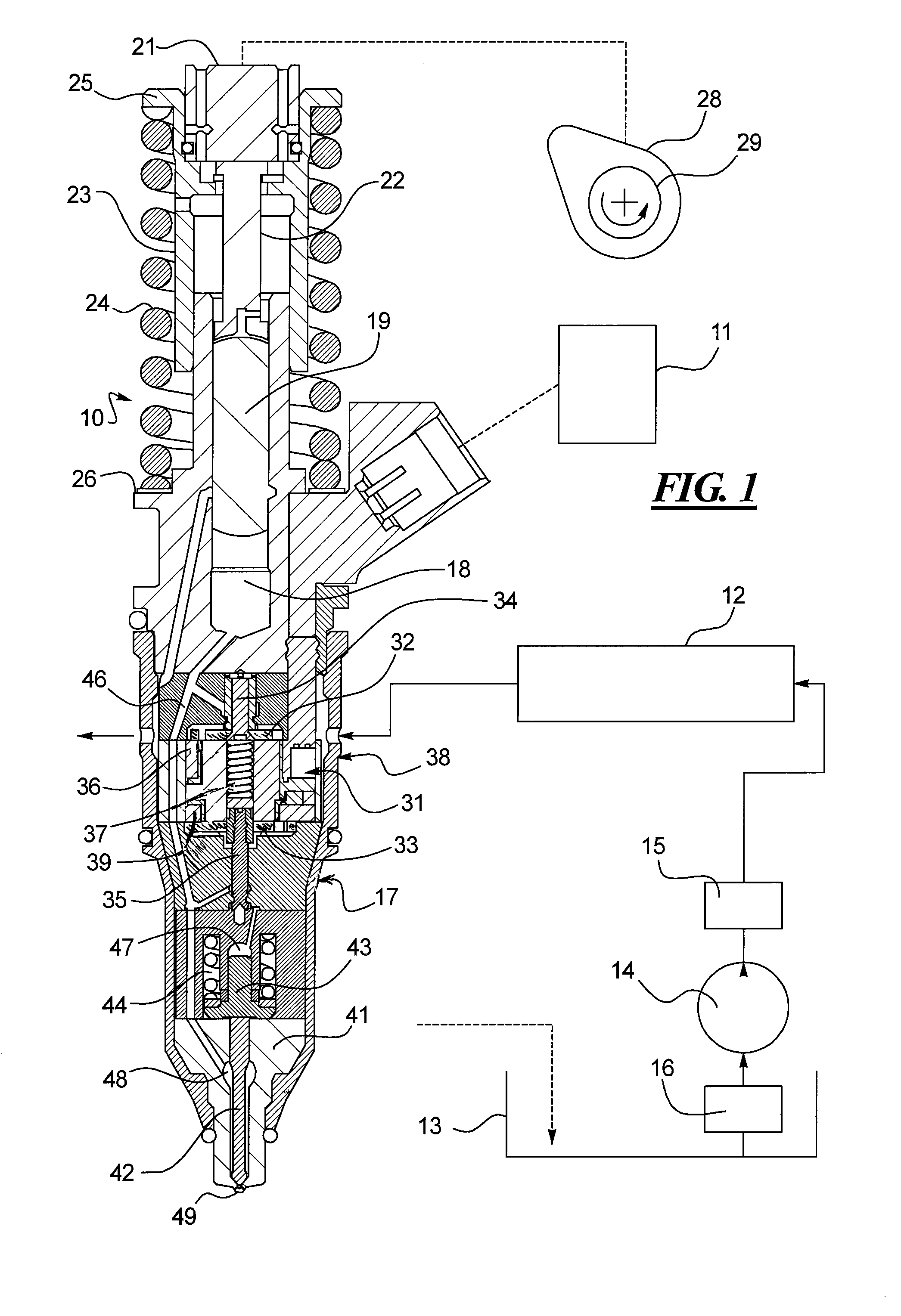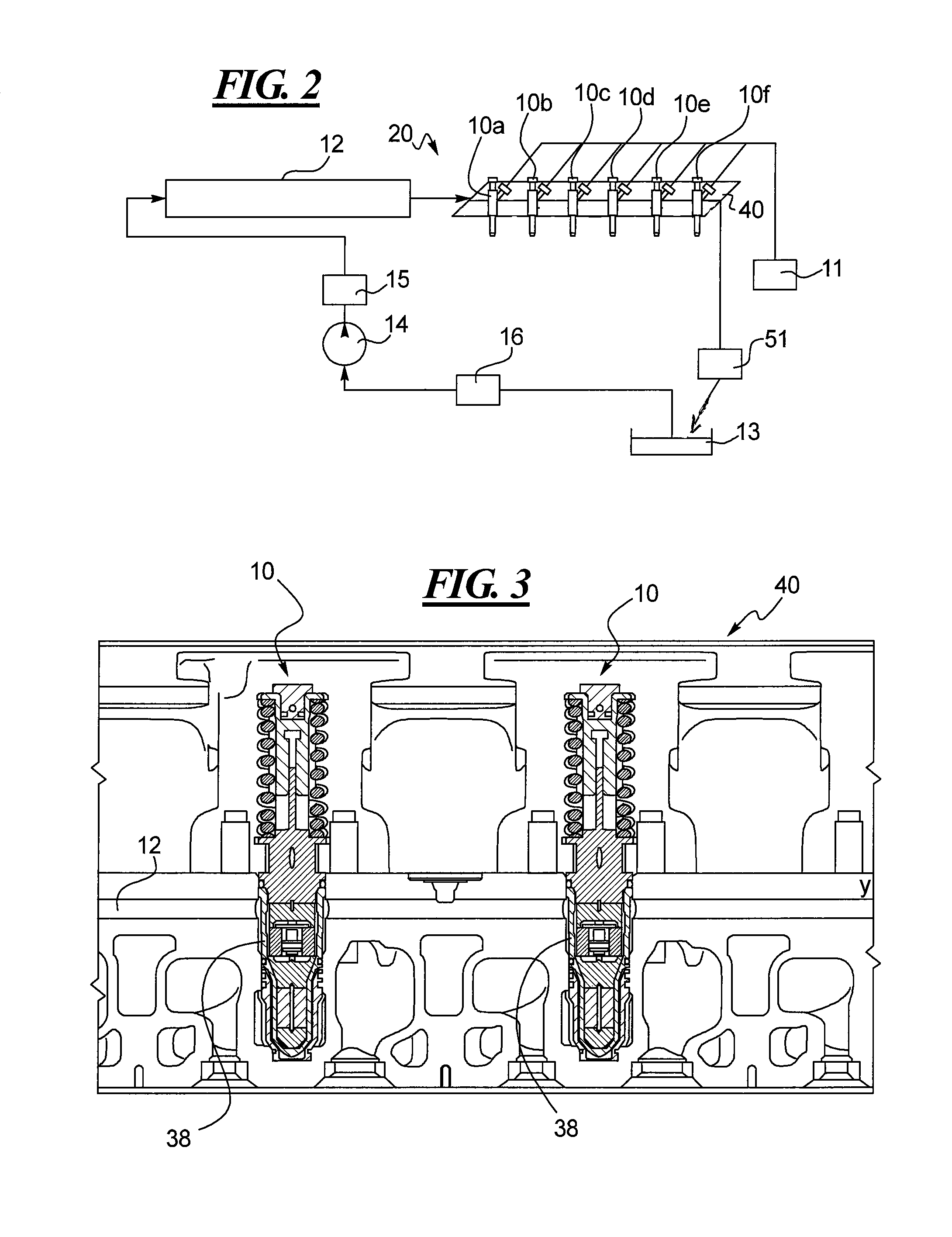System and method for cooling fuel injectors
a fuel injector and cooling system technology, applied in the field of fuel injectors, can solve the problems of high operating temperature of the fuel injector, additional electrical energy required, and dimensional instability of the injector, and achieve the effects of reducing the cooling rate, reducing the flow rate, and increasing the flow ra
- Summary
- Abstract
- Description
- Claims
- Application Information
AI Technical Summary
Benefits of technology
Problems solved by technology
Method used
Image
Examples
Embodiment Construction
[0023]In general, the heat flux Q of a static fluid / solid system can be expressed as a function of the heat transfer coefficient h, the surface area A and temperature difference between the cooling fluid and the solid surface:
Q≈hAΔT
where Q is the heat flux (W); h is the heat transfer coefficient (W / (m2K)); A is the heat transfer surface area (m2); and ΔT is the difference in temperature between the solid surface and surrounding fluid area (K);
[0024]For dynamic systems, the equations used for calculating heat flux are complex and depend on the type of dynamic system. However, the heat flux of a dynamic system is also dependent upon the surface area utilized for heat transfer or the velocity of the cooling fluid or both. In this disclosure, one or both of these variables are manipulated for improving the temperature profile of fuel injectors connected in series along a fuel rail. In short, the flow area and fuel (coolant) flow rates are manipulated to increase the cooling rates of the...
PUM
 Login to View More
Login to View More Abstract
Description
Claims
Application Information
 Login to View More
Login to View More - R&D
- Intellectual Property
- Life Sciences
- Materials
- Tech Scout
- Unparalleled Data Quality
- Higher Quality Content
- 60% Fewer Hallucinations
Browse by: Latest US Patents, China's latest patents, Technical Efficacy Thesaurus, Application Domain, Technology Topic, Popular Technical Reports.
© 2025 PatSnap. All rights reserved.Legal|Privacy policy|Modern Slavery Act Transparency Statement|Sitemap|About US| Contact US: help@patsnap.com



